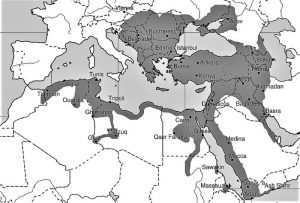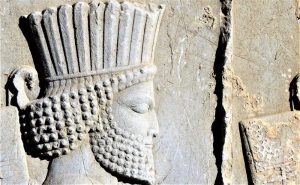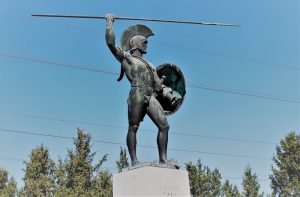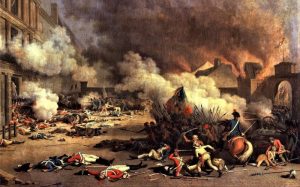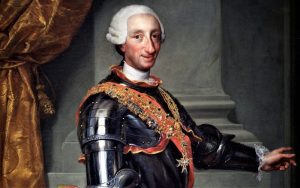Ottoman Empire
The Ottoman Empire represents one of the largest imperial projects in human history, governing vast territories in North Africa, the Balkans and the Middle East. The Ottoman Empire was one of the largest and longest lasting empires in history. It was an empire inspired and sustained by Islam. It replaced the Byzantine Empire as the main power in the eastern Mediterranean. The Ottoman Empire reached its apogee under the orders of Suleiman the Magnificent who reigned between 1520 and 1566, when he expanded to cover the Balkans and Hungary, and reached the gates of Vienna. The Empire began to decline after being defeated at the Battle of Lepanto and losing almost all of its navy. It declined further over the following centuries and was effectively eliminated by World War I and the Balkan Wars.
What is the Ottoman Empire?
Also known as the Turkish Ottoman Empire, it was a multi-ethnic and multi-denominational state whose maximum splendor reached in the 16th and 17th centuries and spread throughout Europe, the Middle East and North Africa. It is the Islamic successor to the classical empires.
History of the Ottoman Empire
The Ottoman Empire began as one more of the small Turkish states of Asia Minor during the decline of the Seljuk Empire. The Ottoman Turks controlled the other Turkish states, which had managed to survive Mongol invasions and under the reign of Mehmed II ended the Byzantine Empire. The first phase of Ottoman expansion took place under the rule of Osman I and continued under the reigns of Orkhan, Murad I and Beyazid I. Ottoman victories in the Balkans alerted Western Europe to the danger and were the reason for Hungary’s Crusade of Sigismund. Finally, the Ottoman Empire managed to conquer Constantinople in 1453.
Origin of the Ottoman Empire
It originates in Central Asia, in Turkestan, with a Turkish tribe. When the Ottoman Turks fought the Seljuks, they also fought the Byzantines and the occupation of the Anatolian peninsula began. The Seljuks encompassed Iraq and Iran, and most of the territories were taken over by the Mongols. From these arose Utman I, who gave the name to the Ottoman dynasty and who marked the beginning of the Turkish empire.
Decline and fall of the Ottoman Empire
One of the main causes of the fall of the Ottoman Empire was the economy. At first, it was a prosperous and self-sufficient empire, but when the Industrial Revolution, the transformation of the economy and the disappearance of the guilds took place, the empire decided to maintain its guild organization. They were the characteristics of the empire before the western progress that caused its fall and by the great inflation that took place in Europe with the flow of the precious metals that came from America. The route that passed through the east was monopolized by the Dutch and English and the economic income of the empire began to decline. Europe was gaining ground on the Ottoman Empire by creating educational institutions and made a revolution in armament and war techniques that left the empire in a completely obsolete state, losing battles and losing territory.
Characteristics
- It had its origin when the Seljuk Turkish empire fell.
- The expansion phase of the empire occurs during the reign of Osman I.
- It functioned as a bridge between East and West.
- The fall of the empire occurred at the beginning of the First World War.
- They carried out a mass murder against Armenia.
- They had a monarchical government and it was a state led by the Osmani dynasty.
- Its maximum splendor arose during the 16th and 17th centuries.
Sultans
Some of the sultans of the Ottoman Empire were:
- Osman Gazi (1281-1326)
- Orhan Gazi (1326-1360)
- Murat I (1360-1389)
- Yildirim Bayazid I (1389-1402)
- Ottoman Interregnum (1402-1413)
- Ahmed I (1603-1617)
- Mustafa I (1617-1618) [First Period]
- Osman II (1618-1622)
- Mustafa I (1622-1623) [Second Period]
- Murad V (1876-1876)
- Abdulhamid II (1876-1909)
- Mehmed V (1909-1918)
- Mehmed VI (1918-1922) [last Sultan of the Ottoman Empire]
Cultures manifestations
In the field of architecture they used as models the church of Hagia Sophia, which was converted into a mosque. In Istanbul you can find the Suleiman Mosque and in Edirme, the gates of the Bosphorus. In terms of civil architecture, the Topkapi Palace in Istanbul stands out, which was also the headquarters of the empire.
The Ottoman Empire consisted of 29 different provinces and four vassal states: Moldavia, Transylvania, Wallachia and the Crimea. Its territory was bordered to the west by Morocco, to the east by the Caspian Sea, to the north by Europe and to the south by Sudan and Arabia. The religion they professed was Islam, but they respected other religions. Their main activity was agriculture and cattle raising, and they produced enough raw material to be able to make their own clothes.
Economy of the Ottoman Empire
Its main source of wealth was military expansion and fiscalism. Agriculture was also part of the economy, as was trade and industry. There was plenty of land to work and they were earning from family farms in agriculture. They maintained an expansion of territory, traditional monopolies, land tenure and crops.
Contributions
The Ottoman Empire had a very good level in terms of technology, which was far superior to the countries of Europe, especially in matters of firearms, and this was a great contribution to future battles. According to historians, one of their first inventions was the creation of the submarine. They also created the Shipyards, in addition to the creation of rockets and firearms.
Location
The Ottoman Empire encompassed the continents of Europe, Asia, Maghrebi Africa. Countries such as Albania, Bosnia, Crimea, Greece, Hungary, the North Aegean Islands, Lebanon, Jordan, Oman, Palestine, Syria, Yemen, Algeria, Libya, Sudan, Tunisia, are some of the countries that reigned the Ottoman Empire.
How to cite this article?
Briceño V., Gabriela. (2019). Ottoman Empire. Recovered on 3 January, 2025, de Euston96: https://www.euston96.com/en/ottoman-empire/
